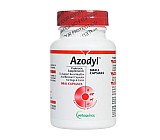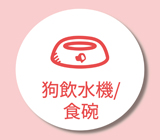耳部感染的季節來到? Is It Ear-Infection Season Already?

春天是耳部感染的季節
對養狗者來說, 唯一能比夏天更能體現夏天的聲音是狗牌和指甲磨擦的叮噹聲, 因為牠們常常搖頭和抓耳。為什麼狗狗會痕癢難耐? 因為春夏對於我們的狗狗說是耳部感染的季節。
耳部感染的成因
狗狗的耳部感染通常是由環境過敏引起的。當空氣變暖變熱時, 花粉、黴菌孢子和其他致敏原開始在水循環系統中快速增長並四處飄散, 從而引起過敏症發作。這些過敏可使耳道旁邊的皮膚發炎, 為二次感染的細菌和真菌打開大門。
而且, 如果您的狗喜歡游泳, 耳道藏多餘水份會營造一個黑暗潮濕的環境, 使酵母菌和細菌繁衍滋生。(食物過敏也可能引起耳部感染, 但這種感染通常是全年而不是季節性的。)
垂耳的狗狗品種, 例如曲架、巴塞獵犬則天生比較容易耳部感染, 因為耳部結構令空氣很難在耳道中流動。有些健康問題例如甲狀腺功能退減症(甲狀腺激素水平低)和耳部腫瘤或腫塊也可能導致耳部感染。
雖然貓的耳部感染並不常見, 但戶外的貓在春夏季節會容易有耳蟎, 這可能會刺激耳朵而導致感染。
耳部感染的癥狀
如果狗狗的耳朵發出臭味或異味, 或用耳朵在地板或牆上磨擦, 這可能是感染的癥狀。其他跡象可能包括狗狗耳道紅腫、有蠟狀的分泌物、 持續搖頭、 抓耳和明顯疼痛。事實上, 有些狗狗可能會避開主人不讓您碰到牠的耳朵和頭。
讓獸醫檢查
如果不及時治療, 耳道的皮膚會變得卵石狀或花椰菜狀, 並且耳道可能會腫脹並永久鈣化。如果鼓膜破裂, 感染可進入中耳或內耳, 並導致聽力下降, 表面癥狀包括失去平衡和顯現一些神經系統症狀。
您的獸醫將會提供全面的身體檢查, 並很有可能會擦拭耳道進行採樣。通過在顯微鏡下觀察耳垢, 他們可以確定是否涉及細菌或酵母菌感染。在某些情況下, 他們甚至會建議種菌方式去鑑定確切的感染源, 從而制定最佳的治療藥物。
有些感染個案可能會令耳部非常疼痛, 醫生可能會建議先使用類固醇來減輕發炎和腫脹, 再進行其他處理程序例如清洗耳朵。有些嚴重的個案, 醫生可能需要對狗狗進行麻醉才能進行適當的耳部檢查。
您的醫生還可能會同時進行其他診斷, 例如血液檢驗或過敏測試, 以檢查其他潛在的健康因素。某些個案更需要X光(X-RAY)或斷層掃描(CT or CAT)以幫助診斷中耳是否同時受到感染。
漫長的康復過程
治療通常包括使用抗生素、抗真菌藥和/或類固醇進行局部治療。獸醫會很樂意向您展示如何正確清潔寵物的耳朵, 使藥物可以達到耳道深處, 發揮效用。在嚴重的個案中, 獸醫可能會處方口服藥物, 甚至在慢性感染的病例中需要進行手術切除耳道。
當然, 治療癥狀的同時也需要治療潛在的過敏或其他可能導致耳朵感染的疾病。如果發現狗狗的耳部感染不斷復發, 請與您的獸醫談談其他可行的測試, 以幫助確定感染的源頭。
解決耳部感染對狗狗來說也是一大樂事, 牠們可以回復正常生活, 及回到自己最喜歡的春夏活動---例如追逐灑水器噴出來的水、游泳。
這篇文章由我們的獸醫共同研寫, 旨在幫助教育寵物主人。如果你對寵物的健康或營養有任何疑問, 請聯絡您的獸醫。本集團旗下的獸醫也很樂意為您提供更多意見。
For Many Dogs, Spring/Summer Is Ear-Infection Season
Know the causes and know when to see the vet
For dog owners, the only sound that epitomises summer more than cicadas, is the jangle of ID tags as their dogs shake their heads and scratch their ears. Why all the racket? Because summer often means ear infections for our canine companions.
WHAT CAUSES THEM?
In dogs, ear infections are often caused by environmental allergies. When the air gets warm, pollen, mold spores and other allergens begin to thrive and waft around on the currents, causing allergies to flare up. These allergies can make the skin that lines the ear canal inflamed, opening the door for secondary bacterial and fungal infections.
And if your dog loves to swim, excess water in the ear canal can create the kind of dark, moist environment where yeast and bacteria thrive. (Food allergies can cause ear infections, too, but in these cases, the infections tend to occur all year long rather than seasonally.)
Dogs with pendulous ears, such as cocker spaniels and basset hounds, may be predisposed to ear infections because it can be harder for air to circulate in the ear canals. Health conditions such as hypothyroidism (low thyroid hormone) and tumors or masses in the ears may also lead to ear infections.
While ear infections aren’t nearly as common in cats, outdoor cats can pick up ear mites in the summer, which can irritate the ears and lead to infection.
HINTS FROM YOUR DOG
If the musky odor emanating from your dog’s ear doesn’t tip you off to an infection, your dog may resort to rubbing his ear on the floor. Other signs may include red, inflamed skin lining your dog’s ear canal, waxy discharge, constant head shaking, ear-scratching and obvious pain. In fact, your dog may shy away from having their head touched at all.
TIME TO SEE YOUR VETERINARIAN
Left untreated, the skin may become cobbled or cauliflower-like in appearance and the ear canals can become swollen and permanently calcified. If the eardrum ruptures, the infection can enter the middle or inner ear and lead to hearing loss, loss of balance and neurological signs.
Your veterinarian will give your pet a full physical exam and most likely swab the ear canal for a sample. By viewing the ear debris under a microscope, they can determine if bacteria and/or yeast are involved. In some cases, they may recommend culturing the sample to identify the exact organisms and the best medications for treating them.
For some dogs, the ears may be so painful that a course of steroids may be required to help reduce swelling and inflammation before the ears can be handled. In severe cases, the dog may need to be anesthetized for a proper ear exam.
Your veterinarian may perform other diagnostics, such as blood or allergy testing to check for underlying health conditions. In some cases, X-rays or computed tomography (a CT or CAT scan) may be recommended to help determine if the middle ear is involved.
THE ROAD TO RECOVERY
Treatment usually includes topical therapy with antibiotics, antifungals and/or steroids. Your veterinarian will be happy to show you how to clean your pet’s ears so the medication can reach deep inside the ear canal. In more severe cases, oral medications may be needed, and chronic cases can even require surgery.
Of course, treating the ear alone won’t solve the problem if you don’t also treat the underlying allergy or other condition that may be behind the ear infections. If your dog’s ear infections keep coming back, talk to your veterinarian about additional testing to help identify the underlying problem.
Solving an ear infection can be a big relief for your dog. Then they can get back to their favourite summer activities — like running through the sprinkler.
The information in this article has been developed with our veterinarian and is designed to help educate pet parents. If you have questions or concerns about your pet's health or nutrition, please talk with your veterinarian.


























Leave a Comment